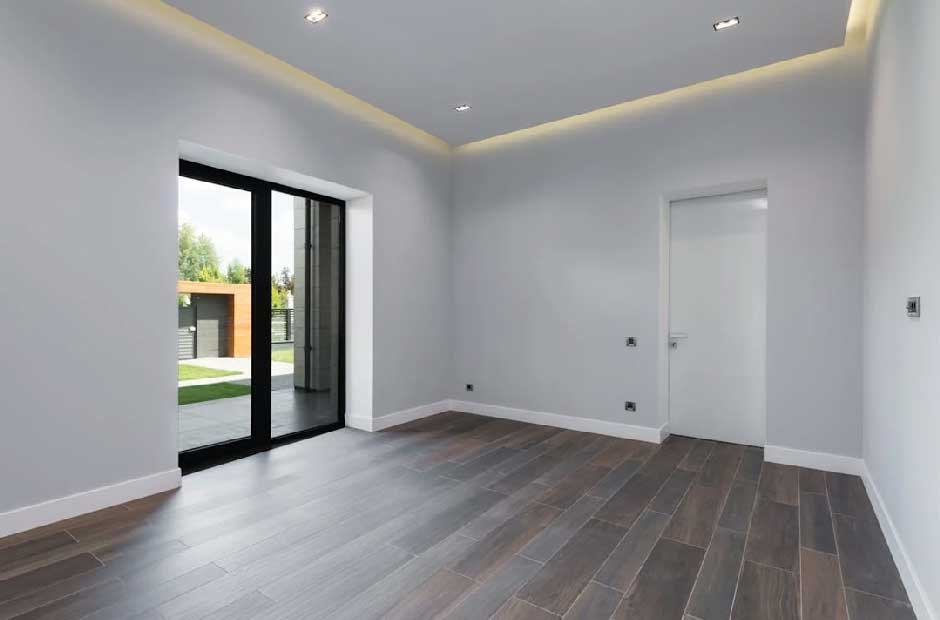A low-maintenance home simplifies life by reducing upkeep, saving you time, energy, and money. Moreover, it can achieve this without compromising on comfort or style.
So what sets these spaces apart? Stay put as we provide an overview of the various must-have aspects of modern homes that minimize maintenance while still looking good and representing value for money.
Image Source: Pexels
The Role of Energy-Efficient Windows and Doors
Windows and doors impact both energy costs and maintenance. Choosing the right ones minimizes effort while improving comfort.
Look for key features including:
- Double or triple glazing to reduce drafts and improve insulation
- Low-maintenance materials like fiberglass or vinyl which need less upkeep than wood
- Factory-applied finishes to prevent peeling, fading, or frequent repainting
Energy-efficient options lower heating and cooling bills by reducing air leaks. Additionally, modern designs often feature easy-to-clean glass coatings that repel dirt. Working with a reputable local window installation provider ensures proper fitting for maximum performance.
Flooring That Stands the Test of Time
Flooring sets the foundation for low-maintenance living. The right materials handle wear and tear while requiring minimal care, and can also fit your home’s aesthetic.
Top options include:
- Luxury vinyl plank, which resists scratches and moisture
- Porcelain or ceramic tile, ideal for high-traffic areas due to its durability
- Engineered hardwood with protective finishes for a natural look and easy cleaning
These choices are both long-lasting and practical. Many options require minimal upkeep, such as mopping or sweeping, without the need for special treatments. Darker tones or textured patterns can also help mask dirt between cleanings, keeping spaces looking fresh for longer.
Exterior Materials Designed for Longevity
A low-maintenance exterior withstands the weather and the test of time with minimal effort. The right materials reduce the need for repairs, painting, and cleaning.
Popular choices include:
- Fiber cement siding resists rot, pests, and warping while holding paint longer
- Brick or stone veneers add durability with almost no upkeep beyond occasional washing
- Composite decking offers the look of wood without fading, splintering, or staining
Roofing also matters when minimizing maintenance. Metal roofs last for decades without frequent fixes. Similarly, asphalt shingles treated for algae resistance prevent streaks that need cleaning.
Landscaping Choices That Reduce Upkeep
A well-planned yard enhances curb appeal without creating extra chores. Low-maintenance landscaping emphasises hardy plants and streamlined designs.
Key strategies include:
- Native plants suited to the local climate, needing less water and care
- Perennials that return yearly without replanting
- Mulching layers to retain moisture, prevent weeds, and reduce watering needs
Hardscaping also simplifies outdoor maintenance. Gravel paths or stone patios eliminate the need for mowing while adding a touch of style. Drip irrigation systems handle watering with precision, saving time and resources.
Innovative Interior Design Features for Simplicity
Smart interior design minimizes household upkeep while enhancing comfort. Thoughtful choices reduce cleaning, organizing, and maintenance tasks.
Helpful features include:
- Built-in storage, like cabinets or benches, to keep clutter out of sight
- Quartz countertops that resist stains and scratches, making cleanup quick
- Touchless faucets or fixtures to limit smudges and germs in high-use areas
Wall finishes also matter when creating low-maintenance spaces. Washable paints resist scuffs and splashes, eliminating the need for frequent repainting. Open floor plans eliminate tight corners where dirt can collect, simplifying sweeping and vacuuming routines.
Choosing Appliances Built to Last
Reliable appliances are a cornerstone of low-maintenance living. Long-lasting models reduce breakdowns, repairs, and replacement costs.
Look for:
- Stainless steel finishes that resist fingerprints and are easy to clean
- Self-cleaning ovens or steam cycles for hassle-free maintenance
- Energy-efficient models with fewer moving parts, which tend to last longer
Smart features also enhance convenience by alerting you to issues early. For example, refrigerators with sensors monitor temperature changes, while washers can notify you of imbalances before damage occurs. Selecting reputable brands known for durability adds peace of mind over time.
The Bottom Line
As you can see, there are lots of ways to reduce the amount of maintenance your home requires. You just need to put the time and effort into making smart choices up front, so that you can reap the rewards in the long term.
Smart materials, efficient appliances, and thoughtful design work together to simplify daily life while reducing long-term costs. Whether or not your budget is tight, it’s sensible to think about these maintenance strategies because of the time you’ll claw back.










